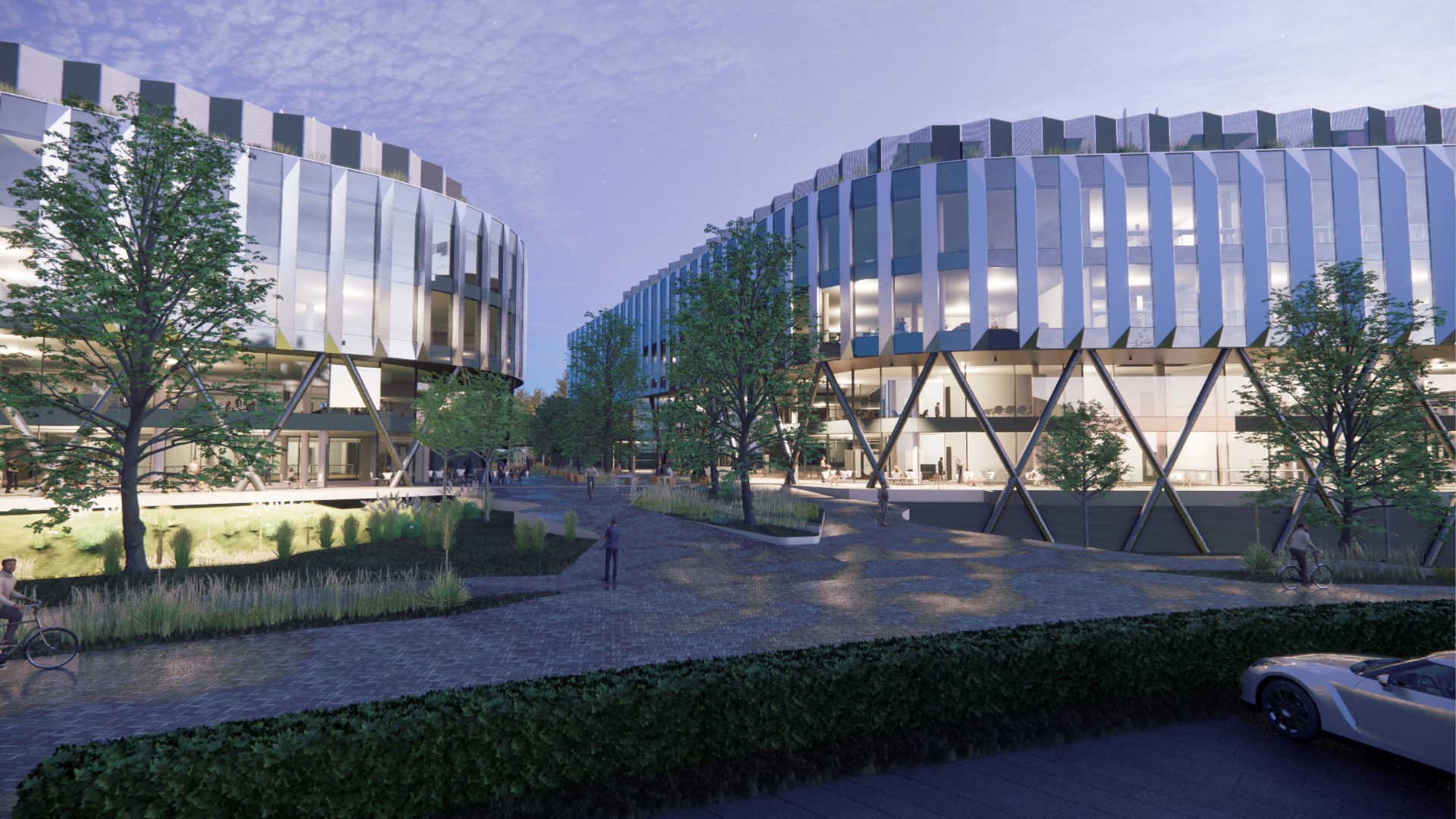Scott Brownrigg appointed to design three new buildings at The Oxford Science Park



We have been appointed to design three buildings on The Oxford Science Park (TOSP), totaling over 400k sq ft. Each building will provide headquarters – office and laboratory facilities – for leading science and technology companies.
The project team consists of Architects and Interior Designers - Scott Brownrigg, Project Managers - Bidwells, MEP Consultants - Hoare Lea, Structural Engineers - Campbell Reith, Planners - Savills, Cost Consultants - Alinea and Ecologists - MK Ecology, Landscapers - McFarlane Associates.
The Oxford Science Park is majority owned by Magdalen College, Oxford, and is at the heart of its strategy to support discovery, innovation and entrepreneurship. Plots 23-26 on The Oxford Science Park are part of long-term, ambitious development plans to create exemplary additional office and laboratory space over the next three years. This additional capacity will support the growth of existing occupiers, providing flexibility with their space requirements, and enabling new companies to join the Park’s unique community.
Rory Maw, CEO of The Oxford Science Park, said, ‘Our expansion cement TOSP’s position as a leading European science park and further Oxford’s reputation for improving global health and well-being. Submission of these detailed planning applications is an important step towards realising this exciting and urgently needed new development for the Oxford innovation ecosystem. With many of our occupiers having grown in size more than fivefold and continuing to expand, plus potential occupiers coming in from Oxford, the rest of the UK and across the world, the new buildings will help meet the demand for high quality laboratory and office space.’
In reinforcing Oxford’s position as a world-leading centre for scientific discovery and invention, the buildings are designed to the highest quality with wellbeing, biodiversity and sustainability at the heart of the design process.
Walkable pedestrian areas are key to the design. The four-storey buildings are expected to have active frontages with cafés and co-working space at ground level and external working and amenity spaces that create a variety of destinations between the buildings. The below podium parking is screened from the pedestrian realm by active frontages and massing.
The landscape design creates a fully biodiverse habitat featuring native species and improving the existing condition, whilst brown roofs where possible are being included on each building. Careful modelling of each building’s orientation and facade ensures excellent levels of internal natural light, with passive design principles that reduce the need for cooling as much as possible.
The design promotes the use of stairs rather than lifts to encourage not only physical wellbeing but serendipitous interactions, critical in research and collaboration. ‘Views out’ from permanent workspaces are encouraged, with designs and internal layouts that support this feature for occupant wellbeing.
Detailed planning applications have been submitted and the scheme is due to complete at the end of 2024.
You're looking for exceptional architecture. We're looking for exceptional projects. Let's start a conversation
Enquire